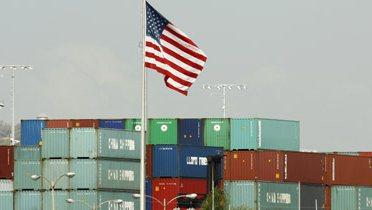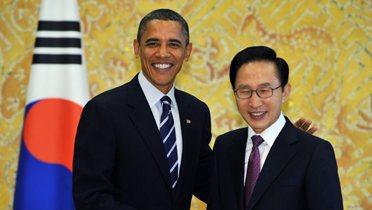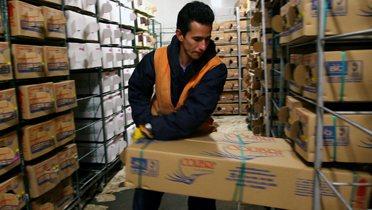Editor’s Note, Oct. 12, 2011: Congress has passed a trio of trade agreements negotiated during the George W. Bush administration and recently submitted by President Obama. The authors of this policy brief say the pacts with South Korea, Colombia and Panama will boost U.S. exports significantly, especially in the key automotive, agricultural and commercial services sectors.
Policy Brief #183
A trio of trade agreements now pending before Congress would benefit the United States both economically and strategically. Carefully developed accords with South Korea, Colombia and Panama will boost U.S. exports significantly, especially in the key automotive, agricultural and commercial services sectors.
Among the other benefits are:
- increased U.S. competitiveness
- enhancement of U.S. diplomatic and economic postures in East Asia and Latin America
- new investment opportunities
- better enforcement of labor regulation and
- improved transparency in these trading partners’ regulatory systems.
The pacts are known as Free Trade Agreements, or FTAs. The Korean agreement (KORUS) was negotiated in 2006-2007 and revised in 2010. The Colombian agreement (COL-US, sometimes known as COL-US FTA) was signed in 2006. The agreement with Panama (PFTA, sometimes known as the Panama Trade Promotion Agreement) was signed in 2007. All have the support of the Obama administration.
| RECOMMENDATIONS |
||
|
The three FTAs will substantially reduce these trading partners’ tariffs on U.S. goods, opening large markets for U.S. commerce and professional services. In combination, they will increase the size of the U.S. economy by about $15 billion. Furthermore, they will help reverse a slide in U.S. market influence in two important and increasingly affluent regions of the globe. Approval of all three agreements is in the national interest. To move forward, both Congress and the administration should take these appropriate steps:
|
Economic Effects of the Korea Agreement
The economic benefits to the United States from KORUS are especially significant, as the agreement will provide preferential market access to the world’s 11th largest—and a fast-growing—economy. In 2010, U.S.-Korea trade was worth $88 billion, comprising U.S. exports of $39 billion and imports of $49 billion, making Korea the United States’ seventh largest trading partner. According to the independent, quasi-judicial U.S. International Trade Commission (ITC), exports resulting from KORUS will increase the U.S. gross domestic product (GDP) by up to $12 billion. This constitutes a remarkable gain in both real and percentage terms.
To the United States, KORUS offers diverse economic advantages. Most strikingly, KORUS will open Korea’s service market to U.S. exports, allowing the United States to exploit its competitive advantages in financial services, education and information and communications technologies. The agreement also will lead to increased imports from Korea, which in turn will help the United States achieve greater economic specialization. The likely effects of more specialization—and of increased Korean investment in the United States—include greater U.S. efficiency, productivity, economic growth and job growth. Meanwhile, U.S. investors will gain new opportunities in the increasingly active Asia-Pacific region.
Lately, passage of KORUS has assumed enhanced importance with the impasse in the World Trade Organization’s Doha Round. No longer can the United States reasonably anticipate that Doha will lead to improved access to the Korean market. Moreover, an FTA between Korea and the European Union (EU) that took effect July 1st confers preferential access to European exporters, undermining the competitiveness of U.S. businesses in Korea. Even before the European FTA, the United States had been losing valuable ground in Korea. Between 2000 and 2010, the United States fell from first to third in the ranking of Korea’s trading partners (reversing positions with China), as U.S. products declined from 18 to only 9 percent of Korean imports. Failure to approve the agreement can be expected to lead to a further decline. These moves will strongly assist U.S. producers of electronic equipment, metals, agricultural products, autos and other consumer goods. For example, agricultural exports are expected to rise $1.8 billion per year.
On the services front, KORUS will increase U.S. businesses’ access to Korea’s $560 billion services market. Financial services providers, the insurance industry and transportation firms stand to benefit substantially. KORUS usefully builds on the link between investment and services by improving the ability of U.S. law firms to establish offices in Korea. In addition, the agreement establishes a Professional Services Working Group that will address the interests of U.S. providers of legal, accounting and engineering services, provided that U.S. representatives engage actively in the group. KORUS also requires that regulations affecting services be developed transparently and that the business community be informed of their development and have an opportunity to provide comments, which the Korean government must answer.
On the investment front, KORUS affords a chance to strengthen a bilateral investment relationship that probably is underdeveloped. In 2009, the U.S. foreign direct investment flow to Korea was $3.4 billion, while there was a net outflow of Korean foreign direct investment to the United States of $255 million. KORUS supports market access for U.S. investors with investment protection provisions, strong intellectual property protection, dispute settlement provisions, a requirement for transparently developed and implemented investment regulations and a similar requirement for open, fair and impartial judicial proceedings. All this should markedly improve the Korean investment climate for U.S. business. It will strengthen the rule of law, reducing uncertainty and the risk of investing in Korea.
On the governance side, KORUS establishes various committees to monitor implementation of the agreement. The most significant of these is the Joint Committee that is to meet annually at the level of the U.S. Trade Representative and Korea’s Trade Minister to discuss not only implementation but also ways to expand trade further. KORUS establishes committees to oversee the goods and financial services commitments, among others, and working groups that will seek to increase cooperation between U.S. and Korean agencies responsible for regulating the automotive sector and professional services. These committees and working groups, enriched through regular interaction between U.S. and Korean trade officials, should increase levels of trust and understanding of each county’s regulatory systems and help officials identify opportunities to deepen the bilateral economic relationship.
Strategic Effects of the Korea Agreement
Congressional passage of KORUS will send an important signal to all countries in the Asia-Pacific region that the United States intends to remain economically engaged with them, rather than retreat behind a wall of trade barriers, and is prepared to lead development of the rules and norms governing trade and investment in the region. KORUS will provide an important economic complement to the strong, historically rooted U.S. military alliance with Korea. It also will signal a renewed commitment by the United States in shaping Asia’s economic architecture.
The last decade has seen declining U.S. economic significance in Asia. Just as the United States has slipped from first to third in its ranking as a trading partner of Korea, similar drops are occurring with respect to Japan, Indonesia, Malaysia and other Asia-Pacific economic powers. In all of Northeast and Southeast Asia, the United States has only one FTA in effect, an accord with the Republic of Singapore. Passage of KORUS now would be particularly timely, both as a sign of U.S. engagement with Asia and as a mechanism for ensuring robust growth in U.S.-Asia trade and investment.
To illustrate how KORUS might affect U.S. interests throughout the region, consider regulatory transparency. The KORUS transparency requirements could serve as a model for how countries can set and implement standards. They might for example, influence the unfolding Trans-Pacific Partnership negotiations, talks that could set the stage for a broader Asia-Pacific FTA. U.S. producers, investors and providers of commercial and professional services could only benefit from a regional trend toward greater transparency and the lifting of barriers that would ensue. Other KORUS provisions favorable to the United States could function as similar benchmarks in the development of U.S. relations with Asia-Pacific nations and organizations.
Effects of the Colombia Agreement
COL-US will also strengthen relations with a key regional ally and open a foreign market to a variety of U.S. products. Bilateral trade between Colombia and the United States was worth almost $28 billion in 2010. COL-US is expected to expand U.S. GDP by approximately $2.5 billion, which includes an increase in U.S. exports of $1.1 billion and an increase of imports from Colombia of $487 million.
COL-US offers four major advantages:
- It redresses the current imbalance in tariffs. Ninety percent of goods from Colombia now enter the United States duty-free (under the Andean Trade Promotion and Drug Eradication Act). COL-US will eliminate 77 percent of Colombia’s tariffs immediately and the remainder over the following 10 years.
- It guarantees a more stable legal framework for doing business in Colombia. This should lead to bilateral investment growth, trade stimulation and job creation.
- It supports U.S. goals of helping Colombia reduce cocaine production by creating alternative economic opportunities for farmers.
- It addresses the loss of U.S. competitiveness in Colombia, in the wake of Colombian FTAs with Canada and the EU as well as Latin American sub-regional FTAs.
With respect to trade in goods, U.S. chemical, rubber and plastics producers will be key beneficiaries of COL-US, with an expected annual increase in exports in this combined sector of 23 percent, to $1.9 billion, relative to a 2007 baseline according to the ITC. The motor vehicles and parts sector is expected to see an increase of more than 40 percent. In the agriculture sector, rice exports are expected to increase from a 2007 baseline of $2 million to approximately $14 million (the corresponding increases would be 20 percent for cereal grains and 11 percent for wheat).
These and other gains will result from the gradual elimination of tariffs and from provisions that reduce non-tariff barriers as well. Among the latter, the most important changes would be increased transparency and efficiency in Colombia’s customs procedures and the removal of some sanitary and phytosanitary (or plant quarantine) restrictions. With respect to trade in services, Colombia has agreed to a number of so-called “WTO-plus” commitments that will expand U.S. firms’ access to Colombia’s $166 billion services market. For instance, the current requirement that U.S. firms hire Colombian nationals will be eliminated, and many restrictions on the financial sector will be removed.
On the investment front, the potential advantages to the United States also are substantial. In 2009, the U.S. flow of foreign direct investment into Colombia was $1.2 billion, which amounted to 32 percent of that nation’s total inflows. COL-US improves the investment climate in Colombia by providing investor protections, access to international arbitration and improved transparency in the country’s legislative and regulatory processes. These provisions will reduce investment risk and uncertainty.
COL-US presents significant improvements in the transparency of Colombia’s rule-making process, including opportunities for interested parties to have their views heard. COL-US also requires that Colombia’s judicial system conform with the rule of law for enforcing bilateral commitments, such as those relating to the protection of intellectual property. In addition to access to international arbitration for investors, COL-US includes dispute settlement mechanisms that the two governments can invoke to enforce each other’s commitments. Taken as a whole, these provisions offer an important benchmark for further developments in Colombia’s business environment. The transparency requirement alone could reduce corruption dramatically.
Labor rights have been a stumbling block to congressional approval of COL-US. The labor chapter of the agreement guarantees the enforcement of existing labor regulations, the protection of core internationally recognized labor rights, and clear access to labor tribunals or courts. In addition, in April 2011, Colombia agreed to an Action Plan strengthening labor rights and the protection of those who defend them. In the few months the plan has been in effect, Colombia has made important progress in implementation. It has reestablished a separate and fully equipped Labor Ministry to help protect labor rights and monitor employer-worker relations. It has enacted legislation authorizing criminal prosecutions of employers who undermine the right to organize or bargain collectively. It has partly eliminated a protection program backlog, involving risk assessments. And, it has hired more labor inspectors and judicial police investigators.
Besides economic benefits, COL-US offers sizable strategic benefits. It would fortify relations with an important ally in the region by renewing the commitment to the joint struggle against cocaine production and trade. Under the agreement, small and medium-sized enterprises in labor-intensive Colombian industries like textiles and apparel would gain permanent access to the U.S. consumer market. With considerable investments, Colombia would be able to compete with East Asia for these higher quality jobs, swaying people away from black markets and other illicit activities.
While Congress deliberates, the clock is ticking. Colombia is also looking at other countries as potential trade and investment partners in order to build its still underdeveloped infrastructure and reduce unemployment. Complementing its FTAs with Canada, the EU, and several countries in the region, Colombia has initiated formal trade negotiations with South Korea and Turkey and is moving toward negotiations with Japan. A perhaps more telling development is China’s interest in building an inter-oceanic railroad in Colombia as an alternative to the Panama Canal: on July 11th President Juan Manuel Santos signed a bilateral investment treaty with China (and the UK) and is expected to meet Chinese President Hu Jintao in the fall.
Effects of the Panama Agreement
Although Panama’s economy is far smaller than Korea’s or even Colombia’s, the PFTA will deliver important economic and strategic benefits to the United States. Considerable gains will take place in U.S. agriculture and auto manufacturing. Moreover, the PFTA will strengthen the U.S. presence in the region, allowing for the stronger promotion of democratic institutions and market-based economies.
U.S. merchandise exports to Panama topped $2.2 billion in 2009. The PFTA’s elimination of tariffs and reduction in non-tariff barriers will cause this figure to grow. For example, rice exports are expected to increase by 145 percent, pork exports by 96 percent and beef exports by 74 percent, according to the ITC. Exports of vehicles are expected to increase by 43 percent. The PFTA also guarantees access to Panama’s $21 billion services market for U.S. firms offering portfolio management, insurance, telecommunications, computer, distribution, express delivery, energy, environmental, legal and other professional services.
Panama’s trade-to-GDP ratio in 2009 was 1.39, highlighting the preponderance of trade in Panama’s economy and the international orientation of many of its sectors. Following passage of the PFTA, Panama will eliminate more than 87 percent of tariffs on U.S. exports immediately. The remaining tariffs will be removed within 10 years for U.S. manufactured goods and 15 years for agricultural and animal products.
PFTA protections to investors—similar to protections accorded under KORUS and COL-US—are especially valuable, as Panama receives substantial investments associated with sectors that will benefit from both from the expansion of the canal and from other infrastructure projects. A fair legal framework, investor protections and a dispute settlement mechanism, all features of the PFTA, are almost certain to increase U.S. investments in Panama. Panama’s Legislature also recently approved a Tax Information Exchange Agreement with the United States and amended current laws to foster tax transparency and strengthen intellectual property rights. These are crucial steps in preventing the use of Panamanian jurisdiction as a haven for money laundering activities.
Panamanian laws and regulations prohibiting strikes or collective bargaining were a concern that initially delayed implementation of the PFTA. But, these laws have been changed, with the exception of a requirement that 40 workers (not the recommended 20) are needed to form a union; the 40-worker requirement has been kept partly because labor groups in Panama support it. The PFTA’s labor chapter protects the rights and principles outlined in the International Labor Organization’s 1998 Declaration on Fundamental Principles and Rights at Work.
Besides offering economic advantages to the United States, the PFTA is a strategic agreement. Strengthening economic links with Panama should bolster the U.S. capacity to address cocaine trafficking in the region, in light of Panama’s location as Colombia’s gateway to North America. The importance of the canal, now undergoing an expansion that will double its shipping capacity, further underscores the U.S. need to strengthen bilateral relations with Panama.
The time to act is now. Like Colombia, Panama has been negotiating with economic powerhouses other than the United States. It recently signed a trade agreement with Canada and an Association Agreement with the EU. Delaying passage of the PFTA would generate a loss of market share for a variety of sectors of the U.S. economy.
Conclusion
All three FTAs encourage trade by removing tariff and non-tariff barriers. All the agreements provide access to large services markets, foster transparency and offer significant strategic advantages to the United States. Congress should approve each of them now.
The authors would like to thank Juan Pablo Candela for his assistance with this project.











